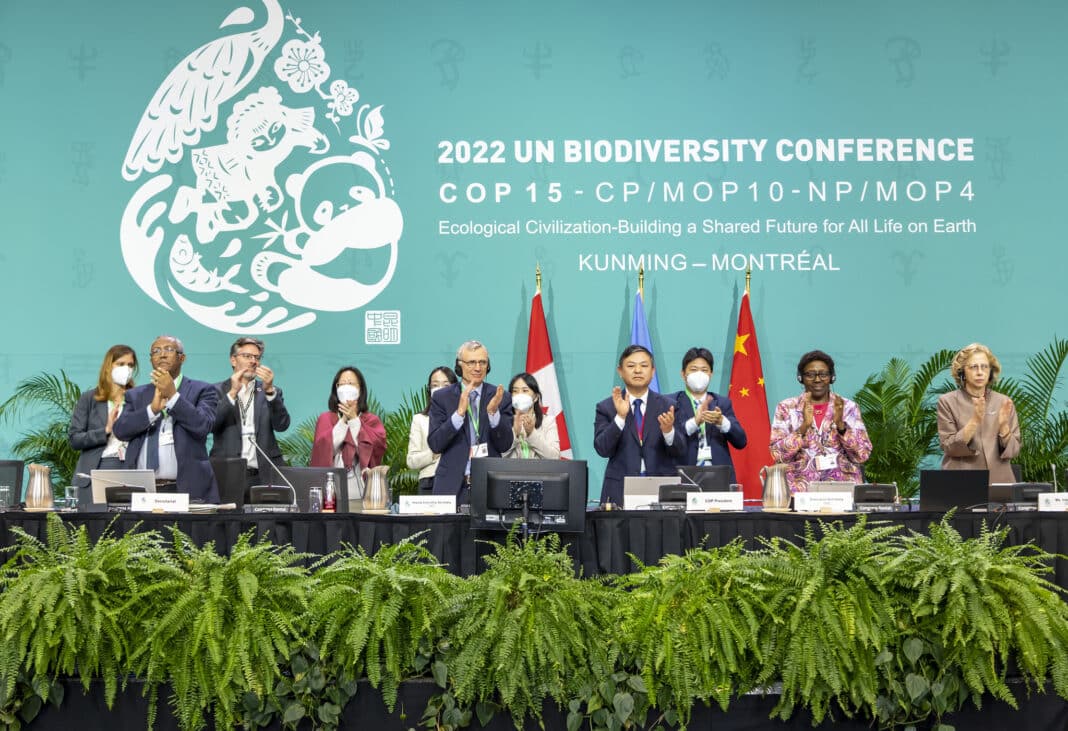Australian industry will have until April 2nd, 2024, to respond to a new “Nature Strategy,” a cornerstone of the Albanese Government’s pledge to “halt and reverse biodiversity loss and to live in harmony with nature.”
The strategy is a key part of the Australian Government’s “30 x 30” commitments, signed at COP15 – with WWF now calling for these commitments to be referenced in future regional forestry agreements.
These commitments ensure “that 30% of the earth’s land and sea is protected through the establishment of protected areas (PAs) and other area-based conservation measures (OECMs).”

In November, Wood Central revealed that the WWF, along with the Nature Conservancy, the Australian Land Conservation Alliance and Pew Charitable Trust, was pushing for these commitments to accelerate the end of commercial native forest harvesting Australia-wide.
With protected land across Australia now at 22%, conservationists are pushing for state forests to be included as a “low-hanging” option for growing protected lands without targeting private landholders.
“The foreshadowed review of the National Forest Policy Statement (NFPS) presents an opportunity to consider incorporating 30×30 commitments and other recent biodiversity conservation policies and commitments,” the trio said, adding that the Victorian and Western Australian (NSW and Queensland) governments’ decisions will assist in meeting these targets.
The group is calling on the government to set up a $5B Green Fund to repurpose more Crown Land (like State Forests), adding that “there are various types of Crown land that could be considered for conversion into protected areas, providing cost-effective opportunities for cost opportunity without the cost of acquisition to obtain protection outcomes.”
It also wants the government to acquire more than 6,000 privately owned properties across Australia “to protect more than 10 million hectares of land.”
Meanwhile, Australia’s largest miner, BHP, has warned that the country’s new Nature Positive Act could complicate application processes, shorten approval times, and increase business and industry costs and litigation risks.
As reported in Kerry Stoke’s new publication, the Nightly, BHP is urging the Federal Government to appropriately manage the transition to the Nature Positive Act and consult meaningfully with industry.
“The Australian Government is about to embark on a significant change to its environmental legislation,” a BHP report said, adding that “the proposed transition from the current process-based EPBC Act to the new standards-based Nature Positive Act, if not managed appropriately, has the potential to make permitting processes even more complex, increasing regulatory burden, approval timelines and litigation risk as well as increasing the cost associated with offsetting impacts.”
“Because of this, we strongly encourage the government to ensure the reform process is not rushed and that all stakeholders are offered the opportunity to have meaningful consultations to enable workable outcomes.”
The concerns come as Wood Central exclusively revealed that the new laws will not have a crucial review mechanism, the Administrative Appeals Tribunal, for decisions made by the Environment Protection Authority.
The lack of oversight has led legal experts to warn of a ‘Yes Minister’ scenario for environmental decisions involving sustainable forest management.
Speaking to Wood Central last year, Stuart Coppock, Timber NSW legal expert, said, “Firstly, there are still significant information gaps in the model provided, and secondly, where there is information, it is not easily in the public domain.”
“I don’t understand why there is no external review process for EPA decision,” he said, before adding that the “most obvious place to put that is in the Administrative Appeals Tribunal (AAT),” adding that “it is cheap, quick and most important of all, available.”
“No one objects to giving nature a serious position in the policy process,” and “a review mechanism in the decision-making” will ensure that decisions are safeguarded from bias.
Wood Central understands that the first draft of the new legislation was provided to NSW and Tasmanian stakeholders in two parts from December 2023.
‘Aside from the environment, the biggest issue facing Australia yesterday, today and tomorrow is productivity.” ‘As a rule,” Mr Coppock said, “strict environmentalists do not consider this.”






